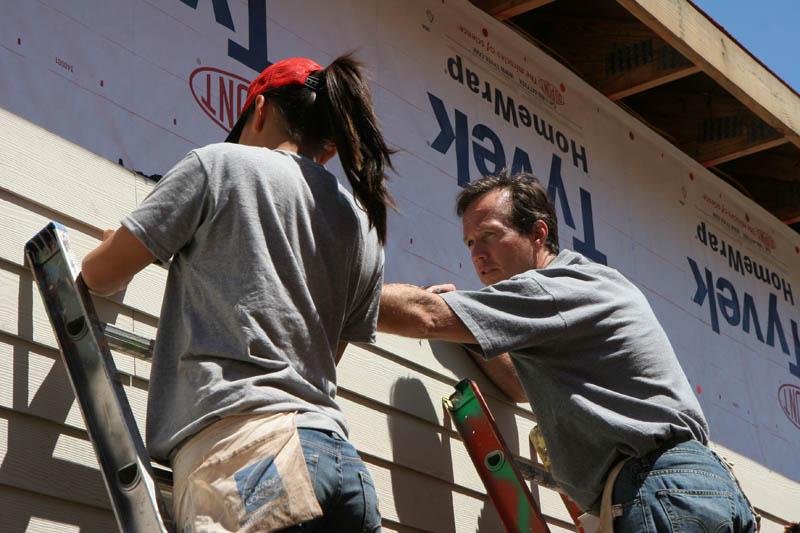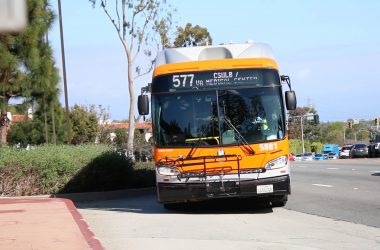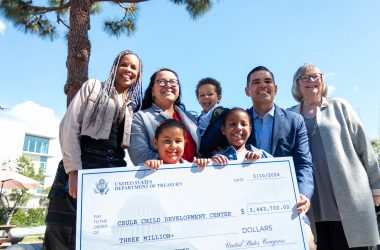Approximately 30 Cal State Long Beach students spent their spring break in New Orleans, not to take in the ambiance of the U.S.’s Mardi Gras capitol, but to rebuild a community.
It has been nearly four years since Hurricane Katrina struck the Gulf Coast, causing more than $80 billion in damage, according to the National Hurricane Center.
For the fourth consecutive year, CSULB sent students, faculty and staff to New Orleans to help in the rebuilding efforts. President F. King Alexander also made the trip for a third year in a row.
In all, 35 members from CSULB participated in the Alternative Spring Break — a trip organized by Habitat for Humanity — to help rebuild homes in the community known as Musicians’ Village.
Michael Bonsynat, a junior sociology major, saw posters around campus promoting the trip and decided to apply just days before the deadline.
Bonsynat admitted he wasn’t sure what to expect from the physical workload but was eager to lend a hand.
“I’ve never worked that much before,” Bonsynat said after returning from the trip. “[I worked] eight hard hours of manual labor everyday. I don’t know where all my energy came from. I guess I just really wanted to help.”
The students worked alongside New Orleans Area Habitat for Humanity (NOAHH) members on various tasks from sawing wood to roofing.
“The other half of the time we spent organizing and reorganizing the Habitat ReStore,” said Christina Tolentino, a senior nursing major. “We unloaded over seven truckloads of stuff. It was a huge project.”
The Habitat ReStore is a retail outlet that sells used and surplus building materials that have been donated. Proceeds from the ReStore go back to the local affiliate’s construction fund.
“We weren’t expecting to organize things,” Tolentino said. “But in the end what we did is really going to help out the community in their rebuilding efforts.”
The students stayed at Camp Home, a converted middle school, in St. Bernard Parish, La., just outside of downtown New Orleans.
Tolentino said the Southern hospitality of the New Orleans people is what she’ll always remember about her trip.
“One of the local residents … asked to trade information with me,” Tolentino said of the woman she had spoken to only a couple of times. “She made me promise to call her once we arrived” at the Los Angeles International Airport.
The camp is scheduled to close May 1 in order to begin construction on a new school at the site. Efforts to relocate the camp are underway, according to the NOAHH website.
Students had to complete an application and provide a letter of recommendation from a faculty or staff member to be considered.
The total cost for the selected students was originally $750 per student for transportation, food and lodging, but the students raised enough funds beforehand to lower the cost to $300 per student.
The students were required to take a political science course taught by liberal studies department chair Daniel O’Connor. The course, “Politics, Culture and Disaster,” examines the impact Hurricane Katrina had on the Gulf Coast and the rest of the nation.
Jessica Deutschel, a sophomore liberal studies major, said the course helped her understand the politics behind natural disasters, as well as New Orleans’ culture.
Yet nothing in the course could have prepared her for what she experienced in post-Katrina New Orleans, she said.
“I was just looking through the pictures I took and I don’t think the pictures are ‘worth a thousand words’ in this case,” Deutschel said. “The pictures do not do justice to all the destruction and devastation. It’s something that cannot be taught in the classroom.”
Tolentino vividly recalled what she saw on her tour of the city that had been devastated by Hurricane Katrina and then threatened by Hurricane Rita just one month later.
“Seeing the houses that were still there, all boarded up, roof shingles broken, marked by FEMA with big X’s and dates,” Tolentino said. “It’s understandable why it’s so hard to rebuild with more than half of the original population gone.”
Deutschel admitted that the work was demanding, both physically and mentally, but that she was still able to enjoy the experience.
“I feel that I did make a difference even though my contribution was small in comparison to what needs to be done,” Deutschel said. “I feel like our group allowed Musicians’ Village to be one step closer to being a community again.”





Heartfelt thanks to the students, faculty and staff of CSULB for their wonderful gifts of labor and caring. Without their efforts, and those of so many other volunteer groups, New Orleans may not have survived. The hard work these volunteers contribute is not just measured in new construction but, perhaps even more importantly, in the hope and optimism that keep the locals looking forward to reclaiming their lives. We can never thank you enough!!